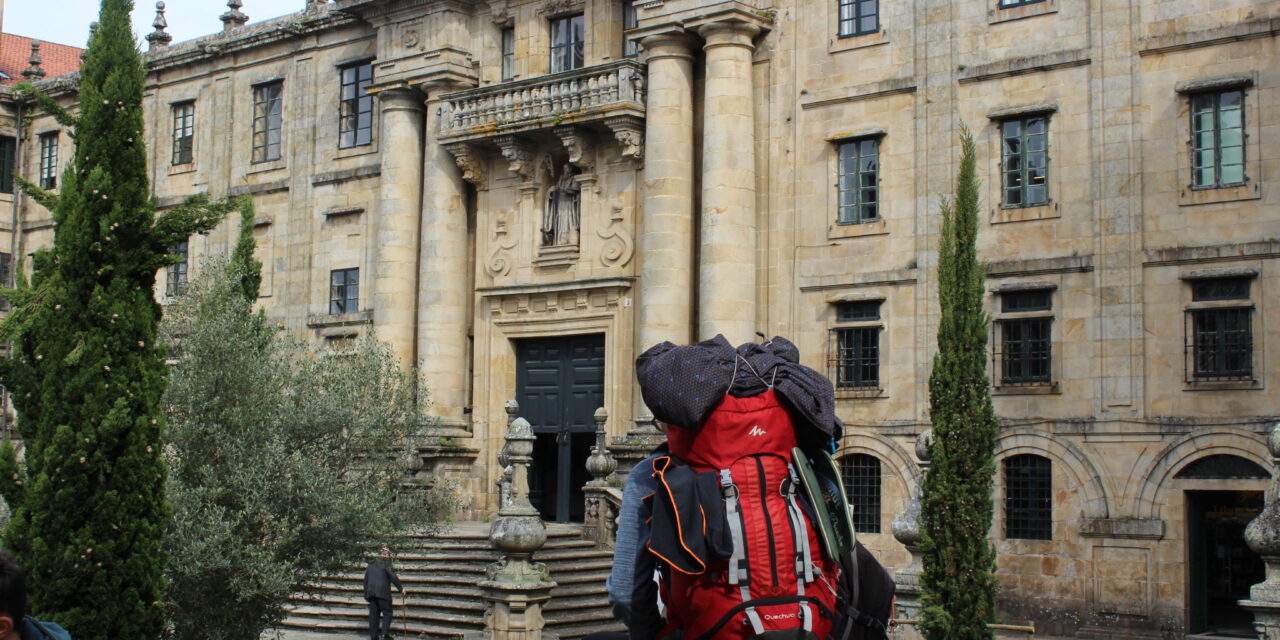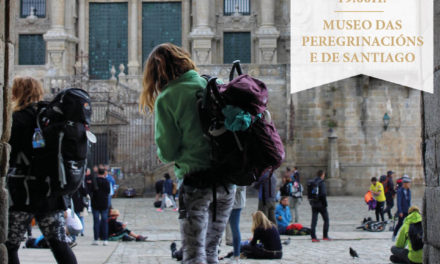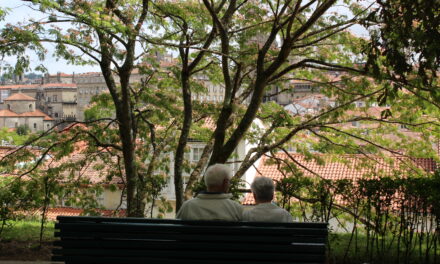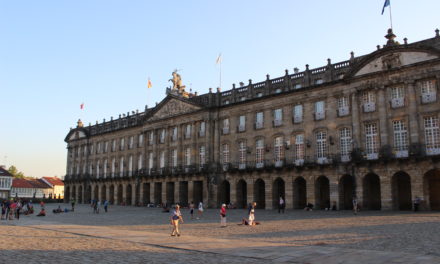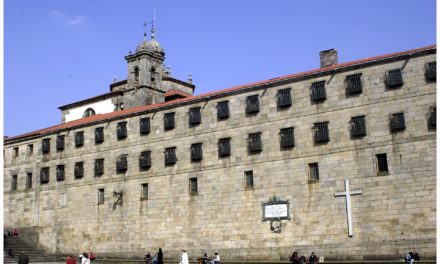The monastery of San Martín Pinario occupies an immense space north of the cathedral of Santiago. We emphasize its dimensions because with its dependencies it constitutes the second largest complex in Spain, being second only to the monastery of El Escorial in Madrid. Although it currently houses a large number of religious and secular institutions – it is the Major Seminary of the Archdiocese, headquarters of the Diocesan Archive, a hotel and even classrooms of the University of Santiago – its foundation and past are linked to monastic life, specifically to the Benedictine Order.
We can trace the origin of the monastery to the presence of some monks taking care of the oratory of San María de la Corticela in Santiago at the end of the 9th century or the beginning of the 10th. The monastery of San Martín would have emerged as such at the beginning of the 11th century, after the tragic Almanzor’s passage through Galician lands, when the monks would have obtained the decisive support of Bishop Pedro de Mezonzo to begin an independent construction in the current space, which had previously been located outside the city walls.
The dedication to San Martín is due to the saint of the Benedictine order San Martín de Tours, an invocation that already indicates a closeness to the Order or, at least, to the rule of Saint Benedict, although the house’s membership of the Benedictine Order has been dated from either the end of the 11th century or the beginning of the 12th century, during the archbishopric of Diego Gelmírez.
The founding of an independent structure allowed the monks to receive numerous donations from kings, bishops and other lords, which would allow it to grow and become an important medieval monastery. The works must have been continuous during the first centuries, with news of the consecration of a Romanesque church by the aforementioned Gelmírez in 1102.
The centuries of growth of San Martín Pinario continued until the 13th, suffering a certain crisis during the 14th and 15th centuries, coinciding with the rise and founding of mendicant communities – Franciscans and Dominicans – in the city of Santiago. But from the 15th century onwards the monastery recovered, being promoted by the Order itself and figures such as the Catholic Monarchs, promoters and benefactors who favoured the monastery with new income and priories.
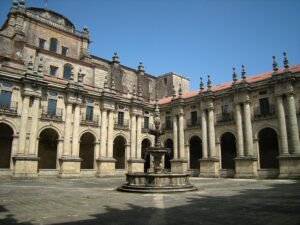 We thus enter the moment of splendor of the monastery, the time of great prosperity that it experienced throughout the 16th century and the entire Baroque period, a period of great economic wealth that allowed the construction of the buildings we know today. The end of the great monastic institution would come with the Confiscation, in 1835, when the Benedictine community was expelled and the monastery became the headquarters of state offices and hosted important events. The monks never returned and, as we have said, the building maintains to this day its function of hosting institutions and events, although also of a religious nature.
We thus enter the moment of splendor of the monastery, the time of great prosperity that it experienced throughout the 16th century and the entire Baroque period, a period of great economic wealth that allowed the construction of the buildings we know today. The end of the great monastic institution would come with the Confiscation, in 1835, when the Benedictine community was expelled and the monastery became the headquarters of state offices and hosted important events. The monks never returned and, as we have said, the building maintains to this day its function of hosting institutions and events, although also of a religious nature.
Regarding current architecture, as we mentioned, the great constructions that we see today are the result of its centuries of splendour, which coincided with the Renaissance, the Baroque and Neoclassicism. During the Renaissance, work continued on the church, but the renovation of the main façade of the monastery would come later, in the 17th century, by the Benedictine architect Fray Gabriel Casas. It is the enormous canvas that opens in front of the north façade of the cathedral -Azabacherías-, a classicist and monumental baroque architecture begun at the end of the 17th century and completed, in 1738, by the famous Fernando de Casas, responsible for the completing the central doorway that includes the sculptural group at the very top of it with the equestrian sculpture of Saint Martin sharing his cloak with a poor man.
Beyond this famous façade and the extraordinary church – to which we will dedicate a monographic post – we would like to highlight the main cloister known as Cloister of the Processions. It was designed by the architect Fernández Lechuga, but its construction went on throughout the 17th century and part of the 18th century, and its completion can be dated to 1743, when it was integrated with the beautiful baroque fountain that occupies its centre.

